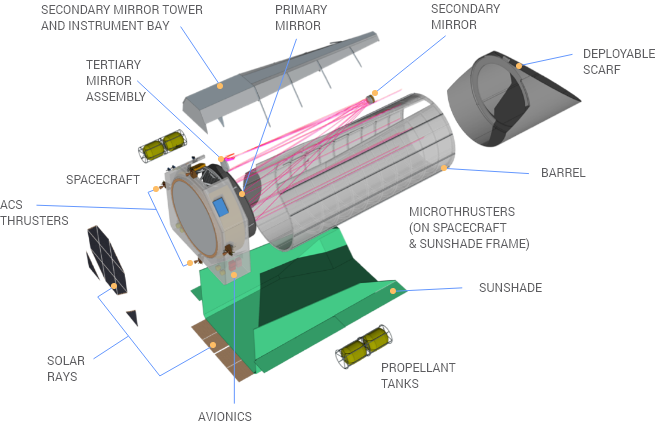MISSION DESIGN & INSTRUMENTS
The Habitable Exoplanet Observatory (HabEx) is a concept for a mission to directly image planetary systems around Sun-like stars. HabEx will be sensitive to all types of planets; however its main goal is, for the first time, to directly image Earth-like exoplanets, and characterize their atmospheric content. By measuring the spectra of these planets, HabEx will search for signatures of habitability such as water, and be sensitive to gases in the atmosphere possibility indicative of biological activity, such as oxygen or ozone.
Habitable Exoplanet Observatory
Mission Duration: 5 years (10 consumables)
Orbit: Earth-Sun L2 halo
Telescope Aperture: 4-meter unobscured
Telescope Type: Off-axis three-mirror anastigmat
Primary Mirror: 4-meter monolith; glass-ceramic substrate; Al+MgF2 coating
Instruments (4): Exoplanet Science: Coronograph, Starshade; Observatory Science: UV Spectograph, Workhorse Camera
Attitude Control: Slewing: hydrazine thrusters; Pointing: microthrusters
Starshade Deployment Steps
The Habitable Exoplanet Observatory (HabEx) includes 4 different instruments:
- multi-purpose near UV to near IR workhorse camera (HWC)
- high-resolution UV spectrograph (UVS)
- coronagraph-based high contrast imaging system
- starshade-based high contrast imaging system
Who To Contact
Scott Gaudi: gaudi.1@osu.edu
Sara Seager: seager@mit.edu
Bertrand Mennesson: Bertrand.Mennesson@jpl.nasa.gov




